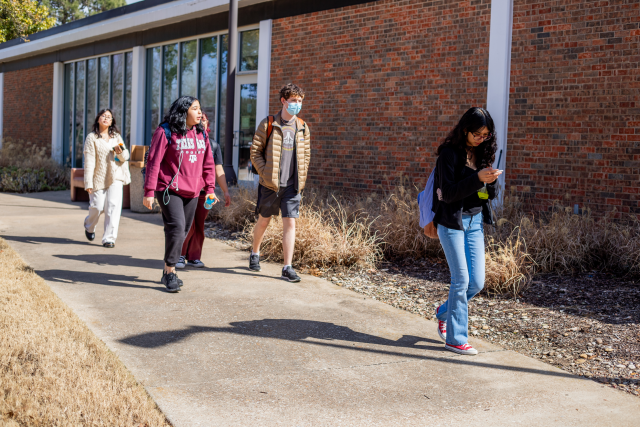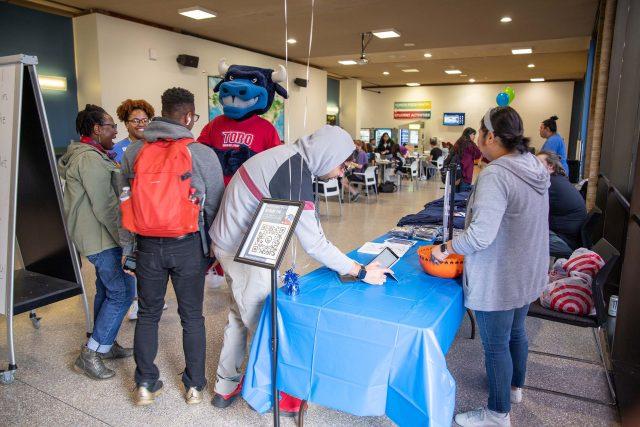
and Services Department there hasn’t been a human-to-human transmission.
Joel Solis/The Collegian
XAVIER BOATNER
campus editor
xavier.boatner@my.tccd.edu
Avian flu has the potential to grow into a health concern for not just birds but humans as well.
The new year has arrived and with it came a new pandemic – for birds. Avian influenza is here and it’s the reason eggs are so expensive now. Industry professionals and students discuss the potential impact it may have on human health.
The avian influenza virus, as described by the Centers for Disease Control and Prevention (CDC), is a naturally occurring disease that spreads among wild aquatic birds worldwide and can infect domestic poultry and other bird and animal species.
Texas Parks and Wildlife Department employee and doctor of veterinary medicine Sara Wyckoff said that there are many ways to identify whether or not an animal has fallen ill to avian flu.
“Current clinical signs you might see in an infected animal include neurological signs such as ataxia, incoordination, muscle tremors or seizure-like activity, heads twisted to the side or moving back and forth or animals that are normally nocturnal coming out during the day time,” said Wyckoff.
Though, this raises the question of whether or not the avian flu virus can be transmitted across species.
Some believe it is able to spread based on information from past viruses like NE student David Boza.
“I think it can spread to a person. It’s happened before,” he said. “The COVID-19 and the Black Death outbreaks originated from an animal, so I think the avian flu virus infecting humans is likely.”
Some believe people shouldn’t worry about the possibility of a cross-species infection like NE student Machia.
“I think it’s unlikely,” he said. “A bird’s immune system and lungs are completely different from a human’s immune system and lungs.”
As recently as Jan. 18, the World Health Organization (WHO) reported that a 9-year-old girl was hospitalized after coming into contact with infected backyard poultry, making this particular strain “zoonotic.”
“One thing to consider with avian influenza is its ability to become ‘zoonotic,’” Wyckoff said. “When a virus spills over to humans from animals now making the human infected and sick, the virus is now considered zoonotic.”
Other documented cases of people contracting avian flu usually involve people coming in contact with infected birds or infected bodily fluids similar to how the flu spreads from bird to bird.
Unlike bird-to-bird transmissions though, there hasn’t been an instance of human-to-human transmission, according to the Texas Health and Services Department. But because new strains are likely to crop up, that’s subject to change.
The potential dangers the avian influenza virus poses to human health range from minor throat irritation to muscle aches, to conjunctivitis or to life-threatening illnesses like pneumonia.
Thankfully, there are ways for people to avoid contact with and help combat the raging avian flu.
Author, ornithologist and former California State University professor Roger Lederer said that it’s a great idea to take initiative to learn more about what’s going on.
He listed various local groups that people can join that specialize in bird studies and observation such as Audubon, Sierra Club, Nature Conservancy, American Birding Association, World Wildlife Fund, Defenders of Wildlife and the Humane Society.
“The best thing to do is get active,” Lederer said. “There are lots more [conservation groups] in the area. They’ve got lots of projects to work on that can help birds.”





































